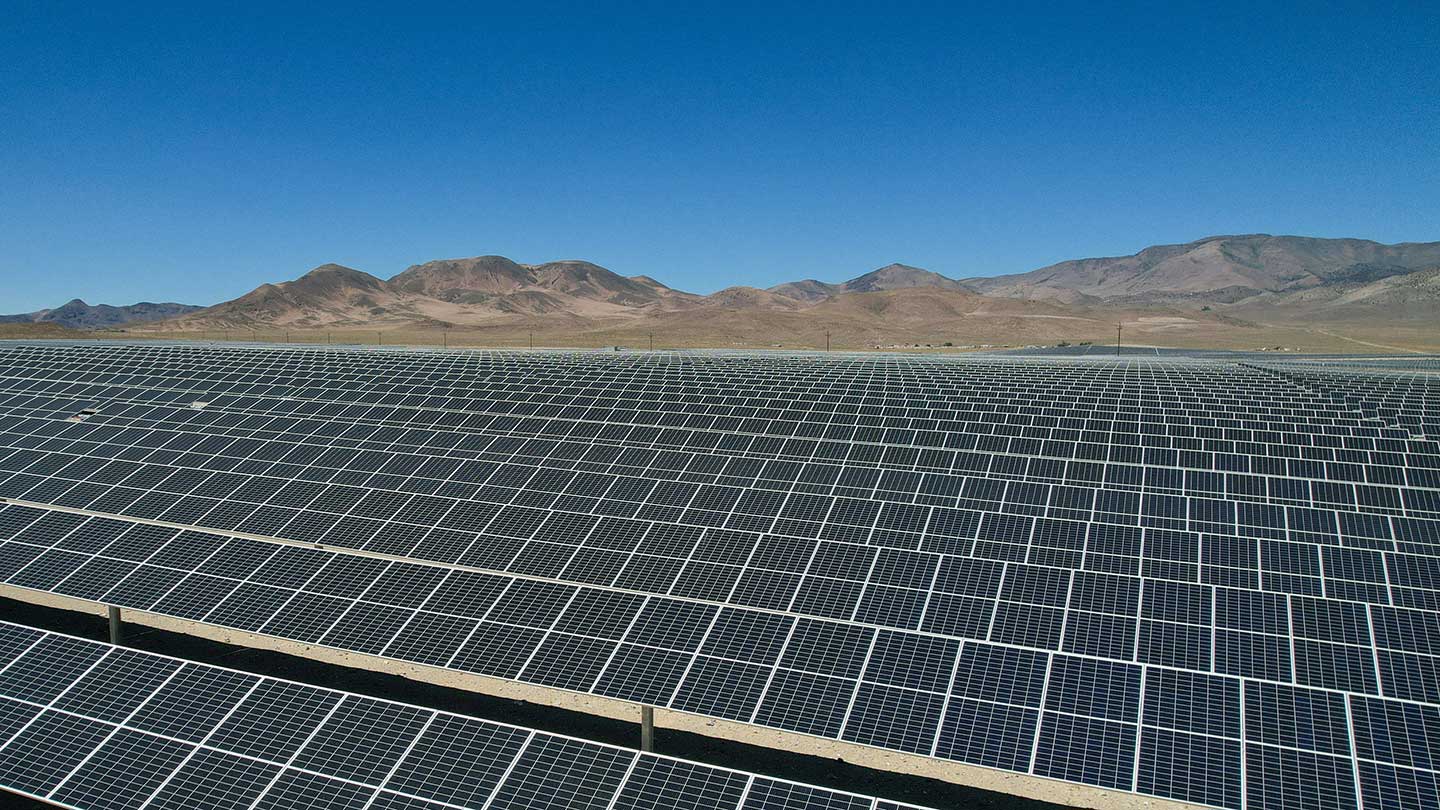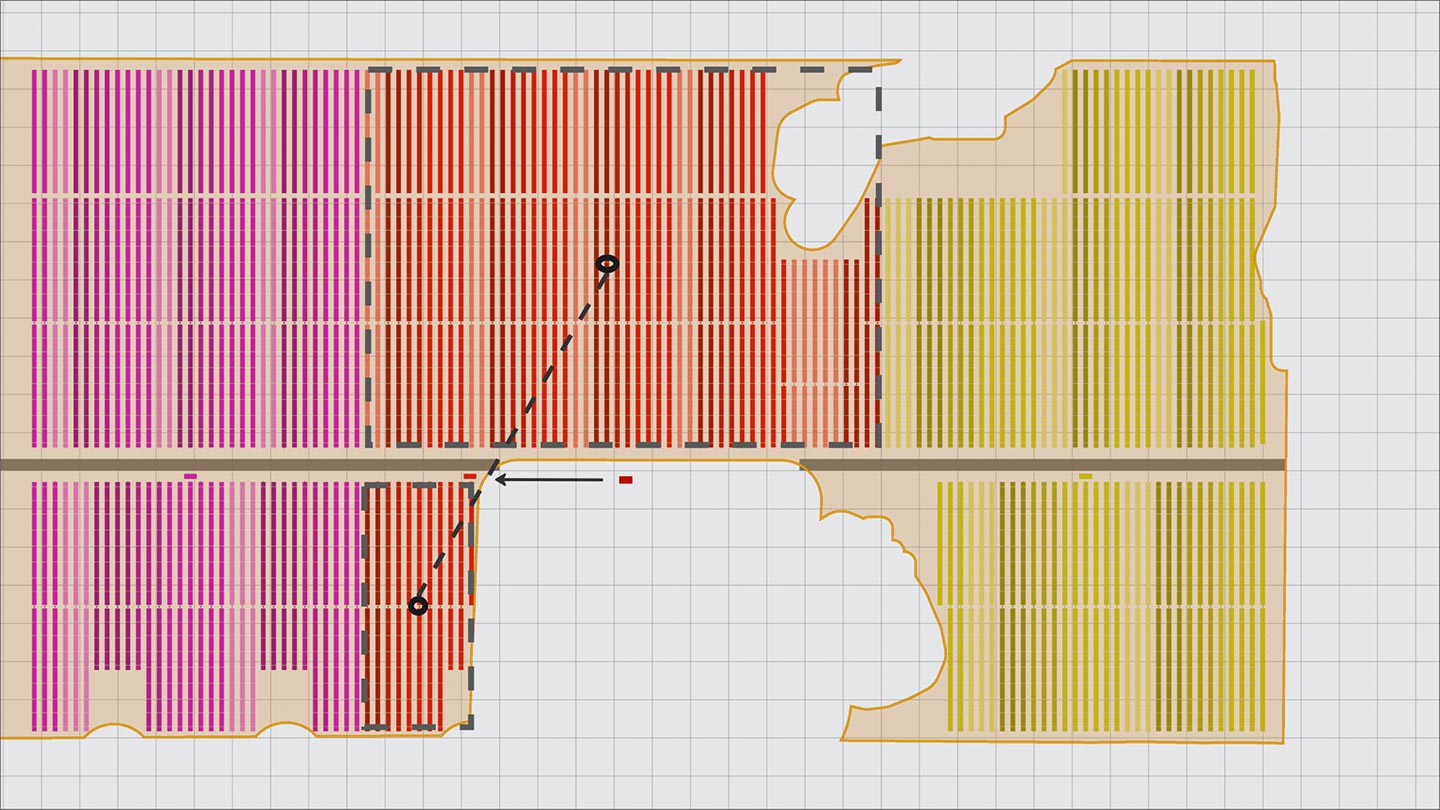What Are Bifacial Solar Panels?
.jpg)
Bifacial solar panels capture sunlight from both the front and rear sides, giving double the energy collection potential. These panels replace the standard opaque backsheet with transparent materials, allowing light to enter from multiple angles.
Unlike conventional solar technology, which only converts direct sunlight hitting the front, bifacial designs also harness reflected light (albedo) bouncing off surrounding surfaces. This approach sets them apart from other solar technologies, like floating solar panels, which sit atop water bodies rather than maximizing ground reflection.
The construction features photovoltaic cells sandwiched between transparent layers, typically tempered glass or clear polymer. When sunlight hits either side of the panel, the cells generate electricity through the photovoltaic effect. The transparent backing allows light reflected from surfaces below to be captured, potentially increasing energy production compared to traditional panels.
Advantages
Bifacial solar panels deliver several key benefits over traditional single-sided models, including:
- Higher energy yield: These panels generate 5-30% more electricity by capturing light from both sides. This boost makes your projects more viable in areas with space constraints where maximizing output matters.
- Extended production hours: By harnessing reflected light at various angles throughout the day, your panels maintain stronger output during early morning and late afternoon when conventional panels falter.
- Greater durability: The glass-on-both-sides construction resists moisture, UV exposure, and physical stress. This robust design gives you longer warranties and extended operational life.
- Better snow performance: The glass backing helps snow slide off more easily while capturing sunlight from snow-covered ground.
- Heat resistance: Many bifacial models show reduced efficiency loss during high temperatures, giving you an edge in hot climates where traditional panels suffer output drops.
These advantages make bifacial panels attractive for utility-scale solar farms and commercial installations. You'll need to weigh these benefits against higher upfront costs when determining if bifacial technology suits your project requirements.
Disadvantages
Despite their impressive capabilities, bifacial panels present several challenges you should consider before installation, including:
- Higher initial cost: You'll pay 10-15% more upfront than for comparable monofacial panels. This price premium significantly impacts your installation budget, though additional energy production may eventually offset this investment.
- Installation complexity: Getting maximum bifacial benefit requires specialized mounting systems that optimize ground reflection. Your installation will demand more planning, precise positioning, and often more expensive hardware.
- Space requirements: For optimal rear-side production, your panels need sufficient ground clearance and proper row spacing. These requirements can limit the total number of panels you can install in a given area.
- Performance variability: The energy boost from the rear side heavily depends on your site's ground reflectivity, panel height, and installation angle. Such variables make performance predictions less reliable than with traditional panels.
These disadvantages explain why bifacial technology has gained more traction in commercial and utility-scale applications than in residential markets. Your project's success depends on thorough site assessments and realistic financial modeling for cost-effective results.
Types of Bifacial Solar Panels
There are several kinds of bifacial solar panels already in use. Among them are:
- Photovoltaic bifacial panels use crystalline silicon cells that convert light from both sides into electricity. Most commercial installations use this for reliable energy production.
- Glass-glass bifacial panels feature tempered glass on both sides, giving you maximum durability and transparency. Your installations in harsh environments benefit from their sealed construction that resists weathering.
- Frameless bifacial panels minimize rear-side shading and integrate into building facades or overhead canopies. The sleek design improves aesthetics while maximizing rear-side energy capture.
- Vertical bifacial panels capture the morning sun on one side and afternoon light on the opposite face. Your energy production becomes more consistent throughout the day.
- Portable bifacial systems harness bifacial advantages in temporary or mobile applications. They capture ground-reflected light even when optimum positioning isn't possible.
These variations demonstrate how bifacial technology has expanded to address specific installation challenges and performance goals. Advanced algorithms quickly identify efficient options to help determine which panel type will maximize energy production for your project requirements.
Bifacial vs. Monocrystalline
Both panel types share core technology but differ in how they capture sunlight and affect project economics.
Monocrystalline panels use single-crystal silicon with opaque backsheets that block rear light absorption. They feature distinctive black cells and provide predictable output based purely on front-side exposure. Your installations benefit from consistent, reliable energy forecasting.
Bifacial panels can use either monocrystalline or polycrystalline cells with transparent materials on both sides. Your energy harvest increases because these panels capture both direct sunlight and reflected light from surrounding surfaces. However, performance varies more depending on ground conditions and installation height.
Monocrystalline panels cost less upfront, making them ideal for residential installations. Large commercial or utility-scale projects, however, often justify bifacial technology's premium pricing through additional energy production when ground conditions optimize rear-side collection.
Installation Options
Bifacial panels can be configured in multiple ways to maximize their dual-sided collection potential and match your project requirements. Popular methods include:
- Elevated rack mounts raise panels 1-2 meters above reflective surfaces, significantly increasing rear-side light capture. Ground-mount systems often use light-colored gravel beneath the array to maximize the albedo effect.
- Vertical installations in east-west orientation let panels capture morning sunlight on one side and afternoon sun on the opposite side. This creates more consistent daily output while reducing land use requirements.
- Tracking systems follow the sun's path to boost bifacial production substantially compared to fixed setups, continuously optimizing angles for both direct and reflected light.
- Carport structures can house elevation installations over parking lots, which benefit from reflected light bouncing off vehicles or light-colored pavement below. This dual-purpose approach maximizes land use efficiency while providing weather protection.
- Agricultural integration with solar panels allows continued farming while generating electricity, creating dual-purpose land use. The elevated positioning enhances rear-side light capture while crops utilize the space below.
These installation approaches demonstrate bifacial technology's flexibility compared to traditional solar panels. Your choice should consider local regulations, soil conditions, and maintenance access requirements for maximum energy production.
Why Bifacial Solar Panels Have the Highest Watt Density
Top-tier bifacial panels now reach the highest front-side power ratings available in the solar industry, with manufacturers continuously introducing even more powerful models for utility projects. Under optimal conditions, effective output can significantly exceed the nameplate rating when factoring in rear-side production. This remarkable power density combines multiple advanced technologies and dual-sided design advantages.
To select maximum-density bifacial panels, look beyond nameplate front-side wattage alone. Check specifications for bifaciality factor and rear-side power gain under standard test conditions. The most powerful models typically feature high bifaciality factors, meaning their rear sides can generate substantial electricity when exposed to reflected light.
Dynamic energy modeling calculates energy production potential by considering shading, terrain, losses, bifaciality, and backtracking to help you identify the most effective high-density options. Advanced simulation tools ensure you select panels that deliver maximum watt density in real-world applications. This comprehensive analysis approach helps optimize your energy harvest per square foot of installation space.
Are Bifacial Solar Panels Worth It?
Bifacial panels deliver their best return on investment in utility-scale installations with optimized ground reflectivity, where higher upfront costs typically justify themselves through substantial production gains. The value proposition depends heavily on project scale and site conditions.
Ground reflectivity dramatically impacts performance, as light-colored surfaces can significantly boost rear-side production compared to dark soil. Installation height matters, too, since elevated panels capture more reflected light from surrounding surfaces.
Utility-scale solar projects maximize energy harvest through economies of scale and advanced technology that fully leverages bifacial capabilities for hundreds of megawatts of power generation. The value proposition weakens for residential installations since added costs rarely justify modest performance gains possible on typical rooftops with limited rear exposure.
Best Bifacial Solar Panel Manufacturers
The bifacial solar market features several prominent manufacturers that have established themselves as industry leaders through innovation and quality. These companies have invested heavily in bifacial technology development and offer reliable products for various project scales.
- LONGi Solar: Known for high front-side power output with strong bifacial factors, these panels excel in efficiency and rear-side energy capture. Their advanced cell design performs exceptionally well in low-light conditions.
- JA Solar: Their DeepBlue bifacial modules integrate advanced cell technology with robust mechanical design built for challenging environments and demanding applications.
- Canadian Solar: Their BiHiKu series combines bifacial capability with high-efficiency cells specifically engineered for utility-scale projects, making them a preferred choice for large installations.
- Trina Solar: A bifacial technology pioneer, Trina offers both glass-glass and transparent backsheet options across multiple power classes, providing flexibility for different project requirements.
- JinkoSolar: Using transparent backsheets instead of dual glass, these panels maintain excellent bifacial performance while remaining lighter than full glass modules. Installation logistics become simpler due to reduced weight.
Selecting from established manufacturers helps ensure product quality and long-term support. Your choice among these industry leaders should consider warranty terms, local support availability, and compatibility with your specific installation requirements. Quality manufacturers provide the reliability needed for long-term energy production success.




.png)

.png)